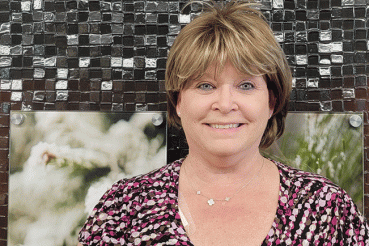A mammogram is an X-ray of your breast that doctors use to detect early signs of breast cancer. Regular mammograms can show breast abnormalities up to two years before they are felt with a physical exam.
When Should I Get a Mammogram?
Rush agrees with the American College of Radiology and the Society of Breast Imaging that all women at an average risk for breast cancer should begin annual mammograms at age 40.
Your provider may recommend earlier screening if you have a higher risk of breast cancer, including a family history or a mutation of the BRCA1 or BRCA2 genes.
Types of Mammograms
Mammograms are low-dose X-rays performed for either screening or diagnostic reasons.
- Screening: Performed when there are no signs or symptoms of breast cancer as part of a routine wellness check.
- Diagnostic: Performed if you experience any breast symptoms, you have had breast cancer in the recent past, your previous mammogram shows an abnormality, or you have breast implants that can hide breast tissue and requires additional images.
We use a 3D mammogram (tomosynthesis) that can make it easier to identify subtle differences in healthy and abnormal tissues. This screening tool can also help detect small cancers in dense breast tissue and has a lower call-back rate after a screening exam.
What Can I Expect During a Mammogram?
Your mammogram imaging is an efficient process completed by a trained imaging specialist.
- Before your mammogram, you will change into a gown that opens in the front. You may want to wear pants or a skirt (instead of a dress) as your clothing below the waist will remain on during the exam.
- You will stand in front of an X-ray machine, and a technician will place your breast on a plate.
- During the X-ray, another plate will press your breast from above and hold it still until the image is captured.
- The technician will adjust your position to obtain two images of each breast.
To schedule your mammogram or breast imaging service, call any Rush breast imaging center. You should also discuss your mammogram schedule with your OB-GYN, primary care physician or midwife.
Are Mammograms Painful?
The compression of your breast during a mammogram involves pressure that some women find painful. This pressure is brief, lasting only the time it takes to capture the X-ray, and most women tolerate this well.
Our highly trained technicians are focused on keeping you as comfortable as possible throughout your mammogram. They will explain every step of the process and will make adjustments for your comfort, while still getting the best images.
You may want to avoid scheduling your mammogram near your period, if your breasts are often swollen or tender during this time.
What Happens After My Mammogram?
A diagnostic radiologist who specializes in breast imaging will read your mammogram and report the results to you and your provider.
- Normal results: If your results are normal, your provider will recommend that you continue to schedule annual mammograms at Rush. Having your mammograms at the same center allows the radiologist to compare previous images and look for changes.
- Abnormal results: An abnormal mammogram does not necessarily mean you have breast cancer, but additional mammograms, ultrasound and other tests may be needed. Your provider will partner with you on the next steps to investigate and/or diagnose any abnormalities.
If you have a mammogram for screening purposes, your provider will follow up with you and discuss the results of your mammogram. You will also receive a message via MyChart or the mail with your results. If you have a mammogram for diagnostic purposes, you will know your results before you leave.
Other Breast Imaging Tests
Rush offers a personalized breast cancer screening program that focuses on finding breast cancer early — when it's most treatable — and on helping women understand their risk for developing breast cancer.
When you come in for a mammogram, you will be offered a risk assessment, which includes an ongoing plan for annual or semi-annual screening and follow-up appointments. To help create your personalized breast screening plan, we will evaluate the following factors:
- Your personal and family history
- Your breast density
- Review all factors
If your assessment shows that you are at high risk for breast cancer, you will be connected with a nurse navigator, who will explain your plan and walk you through every step. This may include any of the following supplemental screening exams:
- Breast MRI: Breast MRIs use magnetic fields to create breast images. We offer a fast MRI, which scans in less than 10 minutes. The breast MRI is most often used to screen women at higher risk for breast cancer or for cancer diagnosis and staging. During this screening, you will receive a contrast agent through an IV in your vein before the procedure.
- Contrast enhanced mammography (CEM): CEM is a newer technology that uses intravenous (IV) contrast combined with a mammogram. This test allows many tumors to be more visible than standard mammograms. CEMs are useful for women who have an increased risk of breast cancer and cannot have MRI.
- Automated breast ultrasound (ABUS): ABUS provides a 3D reconstructed ultrasound image of your entire breast, allowing our diagnostic radiologists to easily see through dense tissue that can often hide small cancers on a digital mammogram. Adding ABUS to your annual screening increases doctors' ability to find small, invasive breast cancers — especially for women with dense breasts — when they are most curable.
After your supplemental breast cancer screening, we will refer you to our high-risk breast cancer clinic, where you will meet with one of our high-risk breast providers and/or genetic counselors for follow-up care.
RUSH Excellence in Mammography
- Identifying cancer earlier, at treatable stages: At Rush, breast radiologists detect 85% to 90% of breast cancers at these early stages, a sign of our providers' expertise in detecting even the smallest cancers.
- Making mammograms convenient: Our breast imaging centers are often close to home and have convenient hours, including Saturdays. Our centers are staffed by board-certified radiologists, who specialize in breast imaging.
- A leader in breast cancer screening for dense breasts: Rush has been at the forefront in caring for women with dense breast tissue. Our robust screening program uses leading-edge technology to screen and diagnose breast cancer earlier.
- Personalized breast cancer screenings: Our breast cancer team offers complimentary risk assessments to all women coming in for their annual mammogram. This allows us to find high-risk women who needed additional screening and uncover early breast cancers that were not visible using a mammogram.
- Advanced technology in screening: We offer innovative technology to screen for breast cancer. This includes 3D mammography (tomosynthesis), automated screening breast ultrasound (ABUS), contrast enhanced mammography (CEM), breast MRI, diagnostic breast ultrasound, tomosynthesis/stereotactic core biopsies, ultrasound core biopsies, MRI guided core biopsies.
- Highest standards of care: Rush is designated a center of excellence by the American College of Radiology. This designation recognizes Rush's expertise, advanced technology and commitment to the highest standards of breast cancer screening.
- Collaborative care: We work closely with our team of breast cancer specialists to provide comprehensive, compassionate and seamless care.




